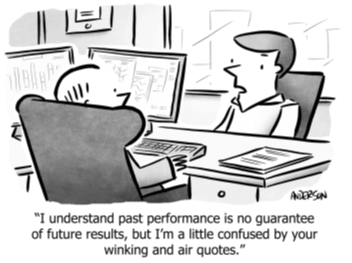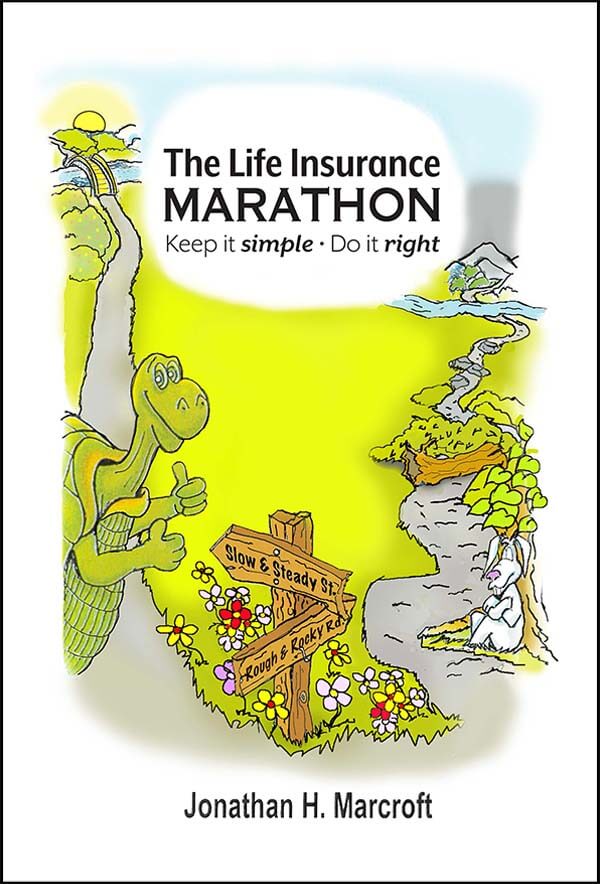Don’t Take Your Life Insurance to Vegas!
Would you put your mortgage on a craps table and roll the dice? Or, would you be comfortable putting your annual income on a roulette table and then spin the wheel? When you purchase non-guaranteed life insurance, you’re actually doing both – and even more. You’re potentially putting everything at risk! The popularity of non-guaranteed life insurance has greatly increased over the years. Many people don’t even know they have one of these policies.
The good news is that most people can change their non-guaranteed policy to a guaranteed policy that is more appropriate for this protection need. In my book, The Life Insurance Marathon, I “call a spade a spade”, and explain how non-guaranteed life insurance works. I dedicated an entire chapter to this subject. Here’s an excerpt. Consider it your “ace in the hole”! ????
At the end of this article you will have the opportunity to receive 5 FREE chapters from The Life Insurance Marathon.
Beware the Gambler and the Allure of Greed Over Need
The Story of the Non-Guaranteed Life Insurance Policy
“HOW DO YOU FEEL about life insurance?” When I worked as a field agent (meeting potential clients in their homes) I always began my presentation with this simple question. With few exceptions, people paused to search for an answer, as if it never crossed their mind. The answers ranged between, “I feel it’s important for my family”, to “I think it’s a total rip off!” (that guy didn’t pause).
Over the years I tracked the responses with great interest. Honestly, this short exchange was, for me, the most interesting part of my presentation. About 80 percent stated they feel that life insurance is like gambling. Think about that: 80 percent! That was a very enlightening nugget of insight for a young field agent.
“You’re right,” I would reply in an agreeable tone. “With some policies, it is like gambling. But it’s the bet you don’t want to win.” We would chuckle, maybe tell each other a gambling story or two, and then move into my presentation. I felt that most of these people appreciated the humanity of my approach, and were perhaps a bit surprised, if not intrigued, by the transparency.
 Transparency is key to the success of any business in this day and age. And yet, for the average consumer, transparency is hard to find in the life insurance industry. Life insurance companies are highly secretive about how they develop their rate structures. They have also created increasingly complex products over the years in an attempt to compete with other financial products offered by investment brokers in the retirement planning space. This behavior has led to consumer distrust of the life insurance industry as a whole, and rightfully so. Why?
Transparency is key to the success of any business in this day and age. And yet, for the average consumer, transparency is hard to find in the life insurance industry. Life insurance companies are highly secretive about how they develop their rate structures. They have also created increasingly complex products over the years in an attempt to compete with other financial products offered by investment brokers in the retirement planning space. This behavior has led to consumer distrust of the life insurance industry as a whole, and rightfully so. Why?
- As consumers, most of us want simplicity and guarantees from the products we rely upon for our needs.
- We tend to feel uncomfortable buying a product when we have little or no understanding about how our price point is determined.
- For most of us, a life insurance policy is not a retirement plan.
In my experience, the three preceding statements are true. Alternatively, in my experience, the following three competing statements are also true:
- As consumers, most of us are attracted to the potential for higher gains from a sexy “investment grade,” non-guaranteed and flexible premium life insurance policy, when compared to the old reliable, slow-to-grow, simple and guaranteed policy.
- After the “greed” emotion sets in, from the perceived promise of strong gains, who cares how the price point is determined, as long as it’s affordable right now.
- “I can use this for my retirement? And not pay any income taxes? Sign me up!”
Have you ever found yourself looking back and wishing you had purchased a brand-new car, rather than your now, broken-down used car? After the many repairs over the years on your used car, the new car may have cost about the same, and with far fewer interruptions in your life. That said, I would much rather be stuck with a broken-down car than a broken-down life insurance policy.
Use my life insurance wizard, PolicyQuest to discover what type of life insurance policy is best for your situation. It takes just a few minutes.
GREED IN LIFE INSURANCE DECISIONS
Greed, in this context, means the act of prioritizing the potential for financial gain over the need for guaranteed protection. It is a powerful consumer emotion, triggered by the positive desire to accomplish more with a single purchase. For example, when life insurance can be represented as an investment that could enhance a retirement portfolio, suddenly it becomes worthy of greater attention, and more of your money. Unfortunately, many people have bought into this concept without fully understanding the long-term ramifications of their purchase. Agents are often trained to tap into this powerful consumer emotion, oftentimes presenting the investment as the primary selling point, and life insurance as a “tax friendly” vehicle for the investment.
 A life insurance policy becomes weak, unhealthy and broken-down when it is underfunded. This can happen for a variety of reasons, but it boils down to a couple of different scenarios: (1) either you aren’t paying your premium, or (2) your non-guaranteed “investment-grade” policy is underperforming and can no longer support the cost of your death benefit (otherwise known as mortality cost).
A life insurance policy becomes weak, unhealthy and broken-down when it is underfunded. This can happen for a variety of reasons, but it boils down to a couple of different scenarios: (1) either you aren’t paying your premium, or (2) your non-guaranteed “investment-grade” policy is underperforming and can no longer support the cost of your death benefit (otherwise known as mortality cost).
Mortality cost is always rising in a life insurance policy; there are no exceptions. Life insurance companies must charge a fee associated with their risk related to the possibility of your mortality. Mortality risk, also known as risk of death, increases every day as you age. Life insurance companies increase the mortality cost for your policy’s death benefit at every policy anniversary date. You never see this increase in cost reflected in your payment, because it is already built into your premium.
Your payment is projected to remain level during the life of your policy. In general, life insurance policies are designed in this way to avoid an underfunding problem down the road. Theoretically speaking, with a level premium payment, you will overpay in the early years, and underpay in the later years. The leveled-out premium design can and will break down if you don’t pay enough premium, or, if your non-guaranteed policy underperforms.
There are literally hundreds of different non-guaranteed life insurance policies on the market today. All of these policies generally follow two basic designs: term life and universal life. Life insurance companies invent and re-create non-guaranteed hybrid policies based upon these two basic designs.
The people tasked with inventing a new hybrid policy are highly creative, and they find ways to make their product seem more attractive than the competition’s. Most of the added design features layered over a basic design are not of great benefit to the consumer, as they generally add cost and risk to the policy which is then passed on to you, the policy owner.
The following are brief descriptions of these two basic policy designs, along with information about two popular design features that are commonly joined to a universal life design. These descriptions are specific to the non-guaranteed nature of each design and explain why they are considered a gamble.
Subscribe to receive 5 FREE chapters including this chapter. This full chapter will be delivered to your inbox immediately. Then, over the next 4 weeks, you’ll receive one FREE chapter per week. We will NEVER spam you. We NEVER share your information with 3rd parties. You will not be bothered by a salesperson. And it’s easy to unsubscribe.
Once you begin to understand life insurance, you can take steps to properly protect your loved ones. It’s much easier than most people think!
Cheers!

>>Get the entire book, The Life Insurance Marathon, on Amazon.com.
>>Try PolicyQuest. Find out what type of life insurance policy is best for your situation.
>>Ready now to get a free quote via email (no salesperson)? Try it here.
>>How much protection does your family need? Find out here.

